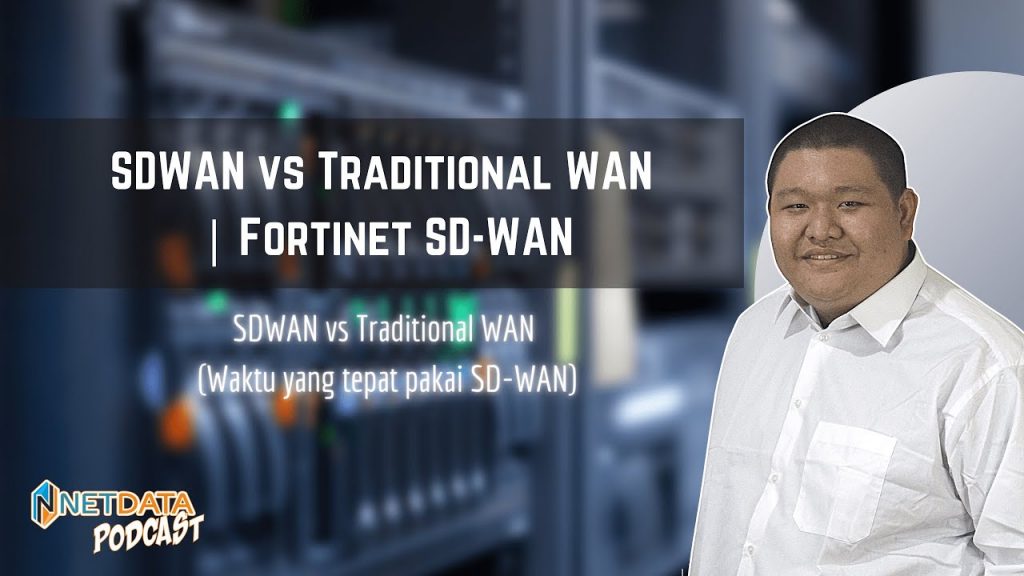Currently, the technology of the WAN is increasingly developing. From those who used to still use the traditional WAN system until now it has become increasingly advanced so that there is such a thing as SDWAN. This SDWAN is a technology from the WAN that is more advanced than the previous models.
Jadi, apa yang dimaksud dengan WAN tradisional dan juga SDWAN? Dan apakah SDWAN harus selalu menggantikan WAN tradisional? Mari kita bahas sekarang.
Table of Contents
What is a WAN
A Wide Area Network (WAN) is a network that uses multiple links – private lines, Multiprotocol Label Switching (MPLS), virtual private networks (VPN), wireless (cellular), Internet – to connect metropolitan networks and smaller campuses in various locations into one, distributed network.
The sites they link to can be a few miles or a half apart from the rest of the world. Within a company, the purpose of a WAN can include connecting branch offices or even individual remote workers with a central office or data center to share company resources and communications.
Pengertian SDWAN
Software defined wide area network (SD-WAN) adalah jenis jaringan komputer yang memungkinkan ikatan beberapa sumber daya akses internet – seperti DSL, kabel, seluler, atau transportasi IP lainnya – untuk menyediakan saluran data throughput tinggi yang andal.
SDWAN abstracts connectivity options – such as multiprotocol label switching (MPLS), cellular and broadband – for virtual enterprise wide-area networks (WANs).
SDWAN features a virtual WAN architecture and software driven technology. The key feature of SD-WAN is its centralized control, so that network connections, security mechanisms, policies, application flow, and general administration are separated from the associated hardware.
SDWAN characters
Some of the characters from SD-WAN include:
- Ability required to support multiple connection types, such as MPLS, Last Mileage Fiber Optic Network or via high speed cellular network, eg. 4G LTE and 5G wireless technology.
- Ability to perform dynamic path selection, for load sharing and resilience purposes.
- Simple interface that is easy to configure and manage.
- Ability to support VPN, and third-party services such as WAN optimization controllers, firewalls and web gateways.
SDWAN features
- Resistance
- The robust SD-WAN reduces network downtime. To be resilient, technology must feature real-time outage detection and automatic fail over to working links.
- Quality of service
- SD-WAN technology supports quality of service by having application level awareness, giving bandwidth priority to the most critical applications. This may include dynamic path selection, sending the application on a faster link, or even splitting the application between the two paths to increase performance by sending it faster.
- Security
- SD-WAN communications are usually secured using IPsec, the main ingredient of WAN security.
- Application optimization
- SD-WAN can improve application delivery using caching, storing recently accessed information in memory to speed up future access.
- Deployment options
- Most SD-WAN products are available as pre-configured equipment, deployed at the network edge in data centers, branch offices, and other remote locations. There are also virtual devices that can run on existing network hardware, or they can be used as virtual devices in the cloud in environments such as Amazon Web Services (AWS), Unified Communications as a Service (UCaaS) or as Software as a Service ( SaaS).
This allows companies to benefit from SD-WAN services as they migrate application delivery from corporate servers to cloud-based services such as Salesforce.com and Google applications.
- Administration and problem solving
- Like most network equipment, a GUI may be preferred over the command line interface (CLI) configuration and control method.
Other useful administrative features include automatic path selection, the ability to centrally configure each end device by encouraging configuration changes, and even a software-defined networking approach that allows all virtual equipment and equipment to be centrally configured based on application requirements rather than the underlying hardware.
- Online traffic engineering
- With a global view of network status, controllers managing SD-WAN can perform careful and adaptive traffic engineering by assigning new transfer requests according to current resource (link) usage.
For example, this can be achieved by performing a central calculation of the transmission rate at the controller and limiting the rate at the sender (end point) according to that rate.
Then what makes it different?
SD-WAN versus Traditional WAN
- Features
- Characteristics
- Deployment
- Use
- Cost
- And others
Limited Bandwidth
Traditional WAN has limited bandwidth because it is usually known as an MPLS link, which usually costs quite a lot to providers.
Meanwhile, SD-WAN uses bandwidth from the internet so that it can be connected over the internet, depending on the cost depending on which one suits your needs.
Dependent Data Center
This is more towards deploying to the cloud, in other words with the use of SD-wan or cloud we don’t depend on this datacenter anymore.
All infrastructure problems have been managed by the data provider.
Unpredictable Application Performance
For example, suddenly via 4G IP sec, the IP link is bad, so it can automatically reroute to other applications based on predetermined performance or SLA.
Complex Infrastructure
If asked whether or not a traditional woman can do it all, you can, but doing the kostumn is very difficult so it is highly discouraged.
However, it is different from SD WAN which already has complete features and can be customized according to your needs. SD WAN is more flexible running in various networks.
Conclusion
SDWAN
- SD-WAN can run to multiple network connections, reducing additional costs.
- SD-WAN offers priority selection of applications and transmits critical data over the best Network link network connections.
- SD-WAN uses encryption and VPN to secure end to end network connections.
Traditional WAN
- Traditional WANs with MPLS offer great QoS, but can also be expensive.
- Traditional WANs offer reliability and predictability with priority of important traffic such as video and voice.
- Traditional WAN MPLS connections are very secure.
- Switching to a traditional WAN requires manual methods.
![]()


